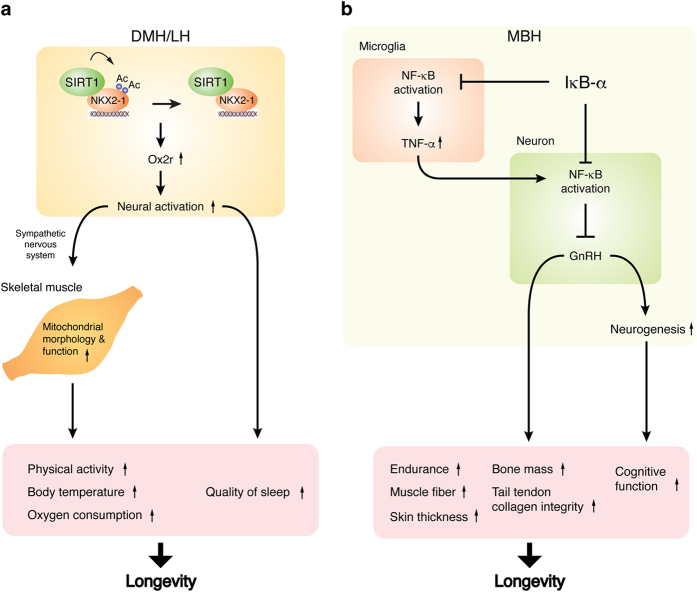Figure 2.
The hypothalamus as the high-order control center of aging. (a) SIRT1/NKX2-1/OX2R-mediated signaling in the dorsomedial and lateral hypothalamic nuclei (DMH and LH, respectively) regulates the aging process and longevity in mammals.53 SIRT1 and its binding partner NKX2-1 (NK2 homeobox 1) upregulate the transcription of the orexin type 2 receptor (Ox2r) gene, leading to neural activation during the dark time. This neural activation stimulates two separate functions: one is the stimulation of skeletal muscle through the sympathetic nervous system, which maintains mitochondrial morphology and function during the aging process, and the other is the stimulation of delta activity in electroencephalogram, which contributes to the maintenance of the quality of sleep. These functions contribute to the promotion of longevity. (b) NF-κB signaling in the mediobasal hypothalamus (MBH) systemically regulates aging and longevity in mammals.58 In the MBH, NF-κB activation in microglia enhances the production of the inflammatory cytokine tumor necrosis factor-α (TNF-α). TNF-α then activates NF-κB signaling in MBH neurons that produce gonadotropin-releasing hormone (GnRH). GnRH is able to prevent various age-associated changes shown in this figure. Thus, inhibiting NF-κB signaling in the MBH prolongs lifespan, whereas activating NF-κB in the MBH shortens lifespan in mice.

